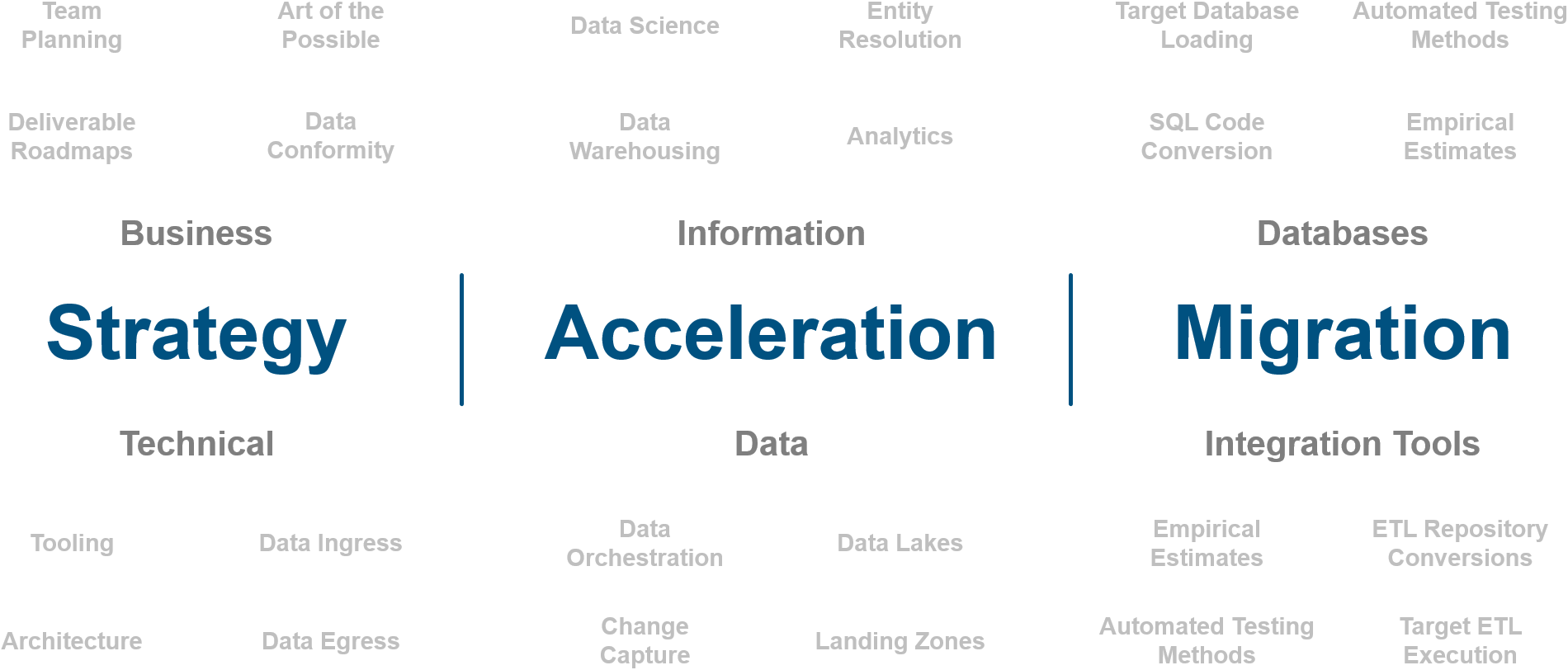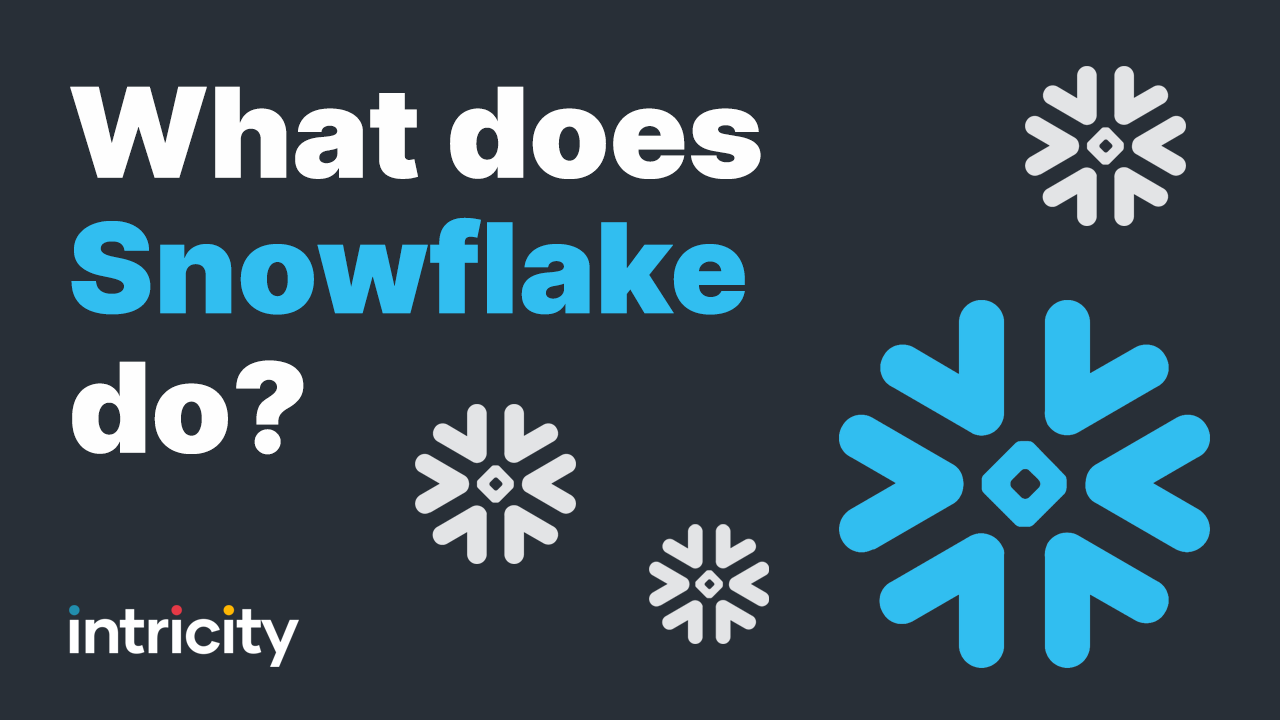
What does Snowflake do?
Written by Jared Hillam

Often company names get thrown around, and assumptions are made that “everybody knows” what that company does or what that company’s product is. Just a couple of weeks back we got the question, “What does Snowflake do” after diving deep into a client’s data environment. Let’s discuss what Snowflake does.
In short, Snowflake’s product is a Data Storage layer in the cloud. But leaving it there sort of underplays its capabilities and fails to highlight why it has been gaining so much traction in the industry.
Beyond just data storage
While at its core, Snowflake is a cloud data platform that provides data warehousing and data lake solutions, it's much more than just a data storage layer. Here's a closer look at its functionalities:
- Scalability: Unlike traditional databases that can often be challenging to scale, Snowflake allows for near-instantaneous scaling. Whether you're dealing with a sudden influx of data or have growing data processing needs, Snowflake can scale up or down in real-time without any downtime.
- Data Sharing and Integration: Snowflake's architecture enables seamless data sharing between different Snowflake accounts. Businesses can share live, ready-to-query data with partners, suppliers, or other departments without copying or moving data. It also supports integration with a plethora of tools and platforms because its core syntax is SQL, making it flexible and adaptable to various use cases.
- Performance and Speed: Snowflake has a unique multi-cluster architecture that separates storage from compute. This ensures high performance since multiple queries won't compete for the same resources. As a result, users experience faster data retrieval and processing speeds.
- Concurrency: Snowflake can handle a large number of simultaneous users and queries without any degradation in performance. This is especially beneficial for large organizations where hundreds or even thousands of users might be querying the database concurrently.
- Security: Security is paramount in the world of data. Snowflake has built-in security features such as end-to-end encryption, role-based access controls, and multi-factor authentication to ensure that data remains safe and accessible only to those with the appropriate permissions.
- Serverless: Snowflake is fully managed. This means that you don’t have to worry about infrastructure, patching, upgrades, or tuning. It handles all of these automatically.
- Cost-effective: With its pay-as-you-go model, organizations only pay for the storage and compute resources they actually use. This can lead to significant cost savings, especially when compared to traditional data warehousing solutions which often come with upfront costs and rigid pricing models.
- Clonable: Snowflake’s immutable storage architecture is held active by a set of pointers. These pointers allow for database clones that don’t duplicate the data footprint. This massively streamlines the DevOps efforts.
Less Technical Perspective
From a less technical point of view, Snowflake’s product frees organizations to expand the functionality of their data assets by making the foundation of their data storage more flexible. The ability to ask complex questions is made easier when the data platform itself isn’t a barrier to getting answers.
What Snowflake isn’t
Snowflake isn’t a transactional database. You won’t be using Snowflake to process your point-of-sale system anytime soon. This is because Snowflake optimizes its data storage for analytical processing - or anything that requires transactional or operational functions.
While transactional or operational databases are designed to handle rapid, frequent, and small transactions (like updating inventory or processing sales in real-time), analytical databases like Snowflake are designed to manage and analyze large volumes of historical data. Their architecture is optimized for complex queries and aggregations, making them ill-suited for real-time operational tasks.
Snowflake uses a columnar data storage approach, which is excellent for analytical queries where typically only a subset of columns are needed. In contrast, transactional databases use a row-based storage approach which is more suitable for operational tasks where entire records are often fetched or updated.
While Snowflake handles concurrency exceptionally well, its design is meant for running simultaneous analytical queries without causing resource contention. Transactional databases, on the other hand, need high levels of isolation to ensure that multiple, small transactions can be processed without conflicting with each other.
Snowflake is optimized for batch data ingestion, meaning it's great for ingesting large amounts of data at once and then analyzing it. A transactional system requires instantaneous data input and retrieval, which is not Snowflake's primary strength.
Snowflake offers immense flexibility in terms of the variety and structure of data it can store. This flexibility, however, comes with the trade-off that it may not be as fast as a specialized transactional system for specific operational tasks.
The bigger picture
Snowflake's rise to prominence is not merely due to its technical prowess but also its ability to address the changing needs of businesses. As companies are generating and utilizing data at an unprecedented rate, the need for flexible, scalable, and secure data solutions has never been greater. Snowflake's cloud-native architecture allows it to meet these needs while also providing a platform that is adaptable for future growth and changing requirements.
So, when someone asks, "What does Snowflake do?", the answer is not just "data storage in the cloud". Whether you're a small business just beginning your data journey or a large enterprise with complex data needs, Snowflake has the potential to transform how you think about and utilize your data.
Who is Intricity?
Intricity is a specialized selection of over 100 Data Management Professionals, with offices located across the USA and Headquarters in New York City. Our team of experts has implemented in a variety of Industries including, Healthcare, Insurance, Manufacturing, Financial Services, Media, Pharmaceutical, Retail, and others. Intricity is uniquely positioned as a partner to the business that deeply understands what makes the data tick. This joint knowledge and acumen has positioned Intricity to beat out its Big 4 competitors time and time again. Intricity’s area of expertise spans the entirety of the information lifecycle. This means when you’re problem involves data; Intricity will be a trusted partner. Intricity's services cover a broad range of data-to-information engineering needs:
What Makes Intricity Different?
While Intricity conducts highly intricate and complex data management projects, Intricity is first a foremost a Business User Centric consulting company. Our internal slogan is to Simplify Complexity. This means that we take complex data management challenges and not only make them understandable to the business but also make them easier to operate. Intricity does this through using tools and techniques that are familiar to business people but adapted for IT content.
Thought Leadership
Intricity authors a highly sought after Data Management Video Series targeted towards Business Stakeholders at https://www.intricity.com/videos. These videos are used in universities across the world. Here is a small set of universities leveraging Intricity’s videos as a teaching tool:

Talk With a Specialist
If you would like to talk with an Intricity Specialist about your particular scenario, don’t hesitate to reach out to us. You can write us an email: specialist@intricity.com
(C) 2023 by Intricity, LLC
This content is the sole property of Intricity LLC. No reproduction can be made without Intricity's explicit consent.
Intricity, LLC. 244 Fifth Avenue Suite 2026 New York, NY 10001
Phone: 212.461.1100 • Fax: 212.461.1110 • Website: www.intricity.com

Sample@gmail.com appears invalid. We can send you a quick validation email to confirm it's yours

